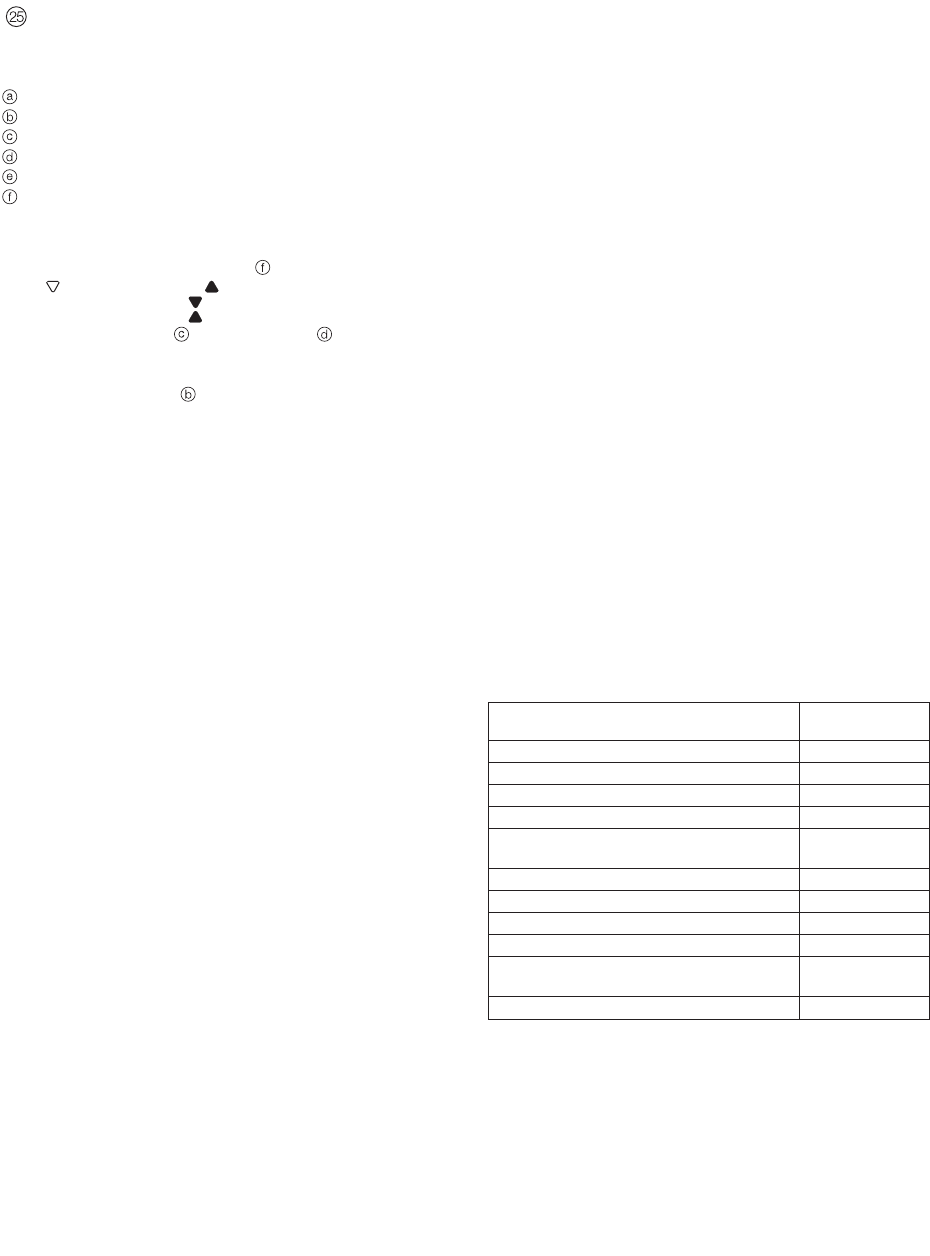
centrifugal juicer (if supplied)
U
se the centrifugal juicer for making juice from firm fruit and
vegetables.
pusher
c
entrifugal lid
pulp remover
filter drum
b
owl
juicing spout
to use the centrifugal juicer
1
Place the juicer bowl with the spout onto the power unit, align
the on the bowl with the on the power unit and turn
c
lockwise º until it locks
.
2 Place the pulp remover into the filter drum - ensuring the
tabs locate with the slots in the bottom of the drum ¾
.
3 Fit the filter drum µ.
4 Place the attachment lid onto the bowl and turn until it
locks ¸. Your juicer will not operate if the bowl or lid
are not fitted correctly into the interlock ቩ.
5 Place a suitable glass or jug under the juice outlet.
6 Cut the food to fit the feed tube.
7 Switch on and push down evenly with the pusher - never put
your fingers in the feed tube. Process fully before adding
more.
●
After adding the last piece, let the juicer run for a further 30
seconds to extract all the juice from the filter drum.
safety
●
Do not use the juicer if the filter is damaged.
●
The cutting blades on the base of the filter drum are very sharp,
take care when handling and cleaning the drum.
●
Only use the pusher supplied. Never put your fingers in the feed
tube. Unplug before unblocking the feed tube.
●
Before removing the lid, switch off and wait for the filter to stop.
important
●
If the juicer starts to vibrate, switch off and empty the pulp from
the drum. (The juicer vibrates if the pulp becomes unevenly
distributed).
●
Maximum capacity that can be processed at one time is 800g of
fruit or vegetables.
●
Some very hard foods may make your juicer slow down or stop.
If this happens switch off and unblock the filter.
●
Switch off and clear the pulp collector regularly during use.
hints
●
Before processing remove stones and pips (eg pepper, melon,
plum) and tough skins (eg melon, pineapple). You don’t need to
peel or core apples and pears.
●
Use firm, fresh fruit and vegetables.
●
Citrus fruit - peel and remove the white pith, otherwise the juice
may taste bitter. For best results use the citrus juicer.
care & cleaning
●
A
lways switch off and unplug before cleaning.
●
Handle the blades and cutting disc with care - they
a
re extremely sharp.
●
S
ome foods may discolour the plastic. This is perfectly normal
and won’t harm the plastic or affect the flavour of your food. Rub
w
ith a cloth dipped in vegetable oil to remove the discolouration.
p
ower unit
●
W
ipe with a damp cloth, then dry. Ensure that the interlock area
is clear of food debris.
●
D
on’t immerse the power unit in water.
●
S
tore excess cord in the storage area at the back of the power
unit ቪ.
liquidiser and mini chopper/mill
1
Empty the goblet/jar before unscrewing it from the blade unit.
2 Wash the goblet/jar by hand.
3 Remove and wash the seals.
4 Don’t touch the sharp blades – brush them clean using hot
soapy water, then rinse thoroughly under the tap. Don’t
immerse the blade unit in water.
5 Leave to dry upside down.
twin beater geared whisk
●
Detach the beaters from the drive head by gently pulling them
free. Wash in warm soapy water.
●
Wipe the drive head with a damp cloth, then dry.
Do not immerse the drive head in water.
all other parts
●
Wash by hand, then dry.
●
Alternatively they are dishwasher safe and can be washed on the
top rack of your dishwasher. Avoid placing items on the bottom
rack directly over the heating element. A short low temperature
(Maximum 50°C) programme is recommended.
6
item suitable for
dishwashing
main bowl, lid, pusher ✔
knife blades, dough tool ✔
detachable drive shaft ✔
discs ✔
whisk beaters ✔
Do not immerse the drive head in water
citrus juicer ✔
centrifugal juicer ✔
liquidiser glass goblet, lid, filler cap ✔
mini chopper/mill jar ✔
blade unit and seal for liquidiser and mini ✘
chopper/mill
spatula ✔
